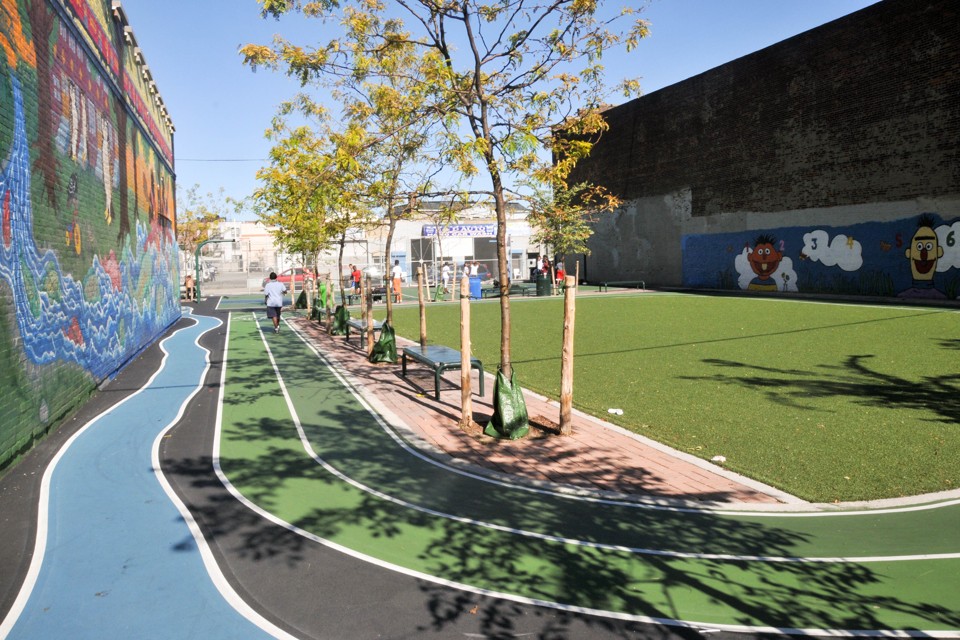
Image from The Atlantic article “Playgrounds for All.”
An April 29, 2016 article from The Atlantic looks at the success of Joint Use programs in both San Francisco and New York and the programs’ positive effects on children and the community. Community use, also known as shared use or joint use, refers to the idea of opening public buildings and grounds at times they are usually closed in order for community residents to exercise and engage in other recreational activities. Community use maximizes the use of existing resources and gives community members access to safe, familiar spaces to be active on evenings and weekends.
“Playgrounds for All” quotes CHLPI’s March 2016 report The Massachusetts Community Use Toolkit, which serves as a how-to guide for creating a Joint Use agreement.
Excerpt from article:
“‘For more than 200 years, U.S. schools have provided local communities with public assembly spaces as well as space for community programs,’ explains a 2008 joint report by UC Berkeley and the Oakland nonprofit ChangeLab Solutions. The concept, known to policy wonks as ‘joint use,’ generates perennial debate in education and urban-planning circles. ‘School facilities are natural sites for shared use [because they] already have certain features … such as fences separating fields from busy streets and handicap accessible ramps,’ adds a report out of Harvard Law. Yet stumbling blocks to open access abound.”


Health Law & Policy, Commentary
Medicaid Section 1115 Waivers for Reentry: Updates and Resources – Health Care in Motion
April 17, 2024